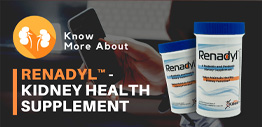Urease Activity in Commercial Yogurt
Anthony Macherone, Natarajan Ranganathan, Beena Patel
Kibow Biotech, Inc. Philadelphia, USA.
Unpublished
Yogurt is becoming increasingly popular with the general consumer and much has been touted about its many potential health benefits such as immunostimulation, an aid in lactose intolerance and it’s potential to recolonize the gut after antibiotic therapy. Our research is focused on the development of a nutraceutical product that has as its primary component a live or lyophilized microbe similar to those found in commercial yogurt products and expresses urease in its normal genetic activity. Accordingly, we have evaluated 5 brands of yogurt purchased at a local grocer for ureolytic activity.
For obvious reasons we will cite products in our study as brands 1, 2, 3, 4 and 5. The active cultures were listed on the container and cell enumeration was performed in our lab by the method of serial dilution (most probable number). Brand 1 contained L. acidophilus and B. bifidus in the quantity of 109 colony forming units (cfu) per mL each. Brands 2, 3, and 4 each contained L. acidophilus in the amount of 1010 cfu/mL, 5×109 cfu/mL and 1010 cfu/mL, respectively. Brand 5 contained S. thermophilus, L. bulgaricus, L. acidophilus, L. casei, L. reuteri and B. bifidus in the quantity of 1010 cfu/mL overall. For the study, 10mL of yogurt was placed in 100mL artificial intestinal fluid (AIF) fortified with 100mg/dL urea and incubated at 37 degrees C with agitation. Aliquots were taken at time zero and every two hours thereafter and evaluated for residual urea content versus time.
Brand 1 demonstrated limited ureolytic activity and hydrolyzed less than 10% of the urea in the system over 24 hours. The results differed only slightly form the normal thermal degradation observed in the control. Brand 2 hydrolyzed approximately 40% of the urea in less than 4 hours and 98% in 24 hours. Brand 3 hydrolyzed 60% of the original urea in 4 hours and 99% in 24 hours. Brand 4 hydrolyzed approximately 30% in 4 hours and only 75% in 24 hours. Finally, brand 5 hydrolyzed approximately 85% of the urea in 4 hours and 100% in 24 hours.
Our results clearly demonstrate strain variation in ureolytic activity amongst the various brands that ostensibly contain the same active species and the benefit of multi-strain symbiosis. Based on insight gained herein, we shifted our research development toward a synbiotic product containing multiple strains of microbes each with selected activity to attain the desired effect of augmenting the normal nitrogenous waste removal functions performed by the healthy kidney.


